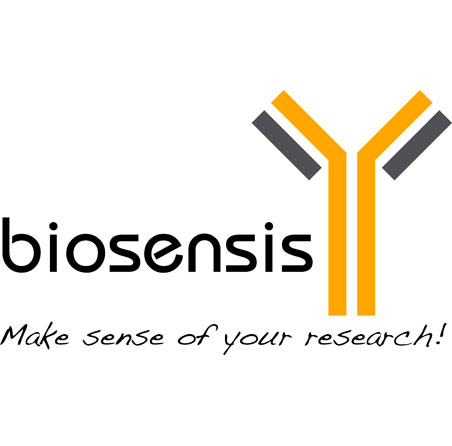Peroxiredoxin-6 (NSGPx), Sheep Polyclonal Antibody
As low as
US$327.00
Only %1 left
Catalog Number
S-073
- Product Name Peroxiredoxin-6 (NSGPx), Sheep Polyclonal Antibody
- Product Description Sheep anti-Peroxiredoxin-6 (NSGPx) Polyclonal Antibody (Unconjugated), suitable for WB, IHC-Frozen, IHC-Paraffin-embedded, ELISA.
- Alternative Names Non-selenium glutathione peroxidase; antioxidant protein 2; 1-Cys peroxiredoxin; 1-Cys PRX; Acidic calcium-independent phospholipase A2; NSGPx; Thiol-specific antioxidant protein; Prdx6; Aipla2; Aop2; Tsa
- Application(s) ELISA, IHC-Frozen, IHC-Paraffin-embedded, WB
- Antibody Host Sheep
- Antibody Type Polyclonal
- Specificity This antibody has been shown to be specific for Peroxiredoxin-6 protein. Rat, human and mouse, other species have not yet been tested.
- Species Reactivity Human, Mouse, Rat
- Immunogen Description Rat recombinant Peroxiredoxin-6
- Conjugate Unconjugated
- Purity Description Whole serum
- Regulatory Status For research use only.
Product Info
- Product Description Sheep anti-Peroxiredoxin-6 (NSGPx) Polyclonal Antibody (Unconjugated), suitable for WB, IHC-Frozen, IHC-Paraffin-embedded, ELISA.
- Application(s) ELISA, IHC-Frozen, IHC-Paraffin-embedded, WB
- Application Details IHC, WB, ELISA. This antibody works superbly in Immunohistochemistry on frozen or paraffin embedded tissues. Antigen retrieval has been used in testing but may not be necessary. Typical working dilutions for routine immunohistochemistry are 1: 100 to 1: 1000 depending on tissue and detection method. For western blotting a dilution range of 1: 500 to 1: 2000 is recommended. A dilution of 1: 1000 to 1: 2000 is recommended for ELISA. This antiserum stains the cytoplasm of epithelial cells in the rat and mouse lung and rat and human brain astrocytes. It stains human brain astrocytes in Parkinson's and Alzheimer 's disease and the central core of some Lewy bodies in Parkinson's disease and dementia with Lewy bodies. Other tissues have not yet been tested. Biosensis recommends optimal dilutions/concentrations should be determined by the end user.
- Target Peroxiredoxin-6 (NSGPx)
- Specificity This antibody has been shown to be specific for Peroxiredoxin-6 protein. Rat, human and mouse, other species have not yet been tested.
- Target Host Species Rat
- Species Reactivity Human, Mouse, Rat
- Antibody Host Sheep
- Antibody Type Polyclonal
- Antibody Isotype Mixed
- Conjugate Unconjugated
- Immunogen Description Rat recombinant Peroxiredoxin-6
- Purity Description Whole serum
- Format Lyophilized
- Reconstitution Instructions Spin vial briefly before opening. Reconstitute in 100 µL sterile-filtered, ultrapure water. Centrifuge to remove any insoluble material.
- Storage Instructions After reconstitution keep aliquots at -20°C for a higher stability, and at 2-8°C with an appropriate antibacterial agent. Avoid repetitive freeze/thaw cycles. Glycerol (1:1) may be added for an additional stability.
- Batch Number Please see item label.
- Expiration Date 12 months after date of receipt (unopened vial).
- Alternative Names Non-selenium glutathione peroxidase; antioxidant protein 2; 1-Cys peroxiredoxin; 1-Cys PRX; Acidic calcium-independent phospholipase A2; NSGPx; Thiol-specific antioxidant protein; Prdx6; Aipla2; Aop2; Tsa
- Uniprot Number O35244
- Uniprot Number/Name O35244 (PRDX6_RAT)
- Scientific Background FUNCTION: Involved in redox regulation of the cell. Can reduce hydrogen peroxide and short chain organic, fatty acid, and phospholipid hydroperoxides. May play a role in the regulation of phospholipid turnover as well as in protection against oxidative injury. SUBUNIT: Homotetramer. May interact with HTR2A. SUBCELLULAR LOCATION: Cytoplasm. Lysosome. Also found in lung secretory organelles. MISCELLANEOUS: The active site is the redox-active Cys-47 oxidized to Cys-SOH. Cys-SOH may rapidly react with a Cys-SH of the other subunit to form an intermolecular disulfide with a concomitant homodimer formation. The enzyme may be subsequently regenerated by reduction of the disulfide by thioredoxin . MISCELLANEOUS: Irreversibly inactivated by overoxidation of Cys-47 (to Cys-SO(3)H) upon oxidative stress. SIMILARITY: Belongs to the ahpC/TSA family. Rehydrin subfamily.
- Shipping Temperature 25°C (ambient)
- UNSPSC CODE 41116161
- Regulatory Status For research use only.
Specifications
- Specific References Kim J-E et al. (2023) Peroxiredoxin 6 Regulates Glutathione Peroxidase 1-Medited Glutamine Synthase Preservation in the Hippocampus of Chronic Epilepsy Rats Antioxidants (Basel). 12(1):156 Application: Rat, IHC (IF).
-
General References
Kim T.-S, et al. J. Biol. Chem. 272:2542-2550(1997).
Choi H.-J, et al. Nat. Struct. Biol. 5:400-406(1998).
Rush J, et al. Nat. Biotechnol. 23:94-101(2005).
Wagner E, et al. Biochem. J. 366:777-785(2002).
Chen J.-W, et al. J. Biol. Chem. 275:28421-28427(2000).
Kang S.W, et al. J. Biol. Chem. 273:6303-6311(1998).
Gevaert K, et al. Nat. Biotechnol. 21:566-569(2003).
Gregory S.G, et al. ature 441:315-321(2006).
Nagase T, et al. DNA Res. 2:37-43(1995).
Frank S, et al. Oncogene 14:915-921(1997).
1Power J, et al. Am J. Path. 161: 885-894 (2202).
1Power J, et al. Experimental Lung Res. 25: 379-391(1999).

 1800 605-5127
1800 605-5127 +61 (0)8 8352 7711
+61 (0)8 8352 7711
